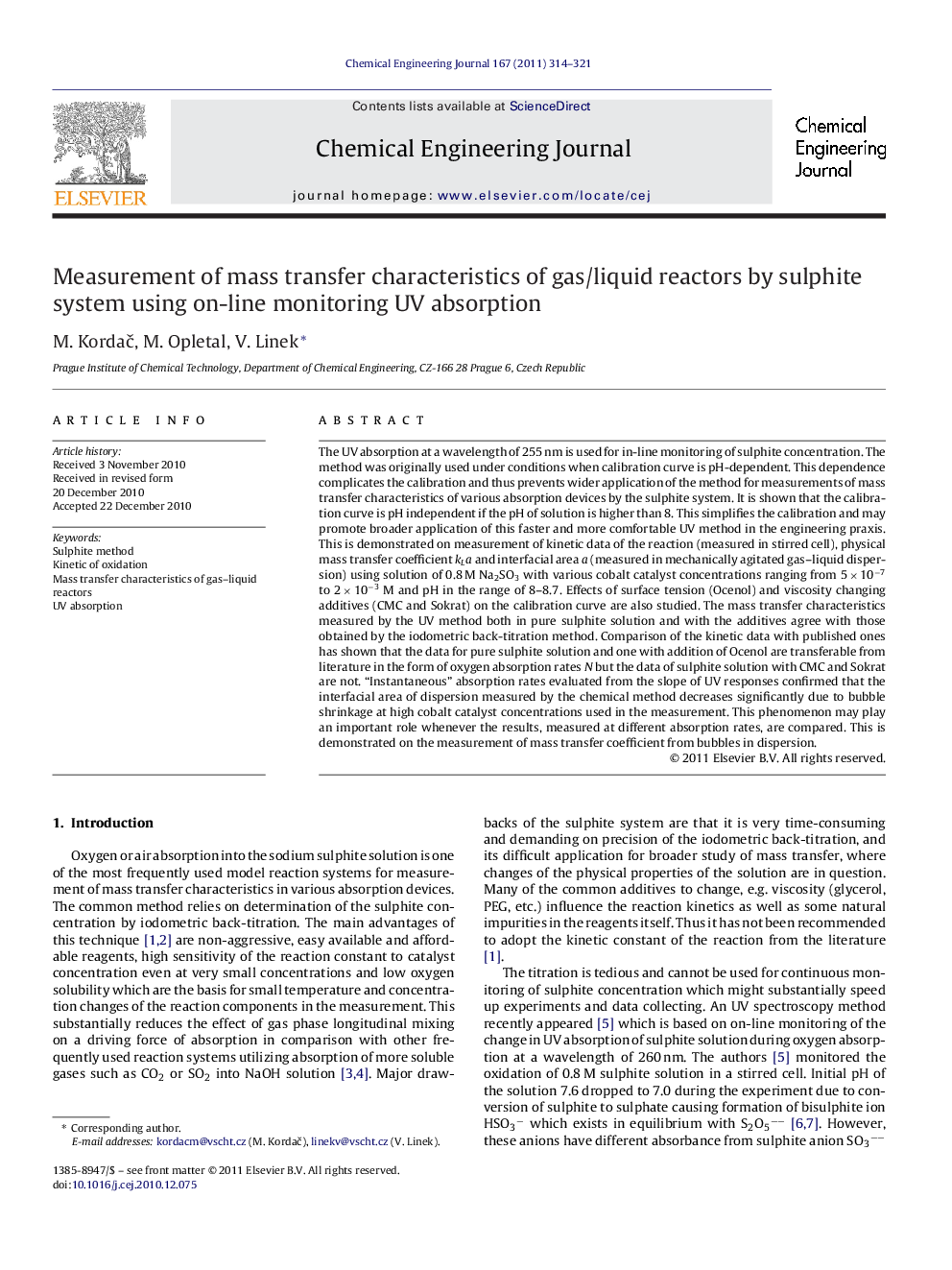| Article ID | Journal | Published Year | Pages | File Type |
|---|---|---|---|---|
| 151637 | Chemical Engineering Journal | 2011 | 8 Pages |
The UV absorption at a wavelength of 255 nm is used for in-line monitoring of sulphite concentration. The method was originally used under conditions when calibration curve is pH-dependent. This dependence complicates the calibration and thus prevents wider application of the method for measurements of mass transfer characteristics of various absorption devices by the sulphite system. It is shown that the calibration curve is pH independent if the pH of solution is higher than 8. This simplifies the calibration and may promote broader application of this faster and more comfortable UV method in the engineering praxis. This is demonstrated on measurement of kinetic data of the reaction (measured in stirred cell), physical mass transfer coefficient kLa and interfacial area a (measured in mechanically agitated gas–liquid dispersion) using solution of 0.8 M Na2SO3 with various cobalt catalyst concentrations ranging from 5 × 10−7 to 2 × 10−3 M and pH in the range of 8–8.7. Effects of surface tension (Ocenol) and viscosity changing additives (CMC and Sokrat) on the calibration curve are also studied. The mass transfer characteristics measured by the UV method both in pure sulphite solution and with the additives agree with those obtained by the iodometric back-titration method. Comparison of the kinetic data with published ones has shown that the data for pure sulphite solution and one with addition of Ocenol are transferable from literature in the form of oxygen absorption rates N but the data of sulphite solution with CMC and Sokrat are not. “Instantaneous” absorption rates evaluated from the slope of UV responses confirmed that the interfacial area of dispersion measured by the chemical method decreases significantly due to bubble shrinkage at high cobalt catalyst concentrations used in the measurement. This phenomenon may play an important role whenever the results, measured at different absorption rates, are compared. This is demonstrated on the measurement of mass transfer coefficient from bubbles in dispersion.
